Stocks are opening broadly lower on Wall Street, as U.S. futures pointed lower Thursday ahead of new consumer spending data that could provide clues as to how Americans may be paring back spending in the face of stubbornly high inflation, which Biden can no longer blame on Trump, this is all on him. On Wednesday, the government confirmed that the U.S. economy shrank 1.6% in the first quarter in its third and final estimate of the country’s gross domestic product. As reported by the AP:
The Commerce Department issues its May report on consumer spending before markets open on Thursday, which will give investors more detail about Americans’ spending last month
NEW YORK (AP) — Stocks are opening broadly lower on Wall Street Thursday, continuing a dismal streak that brought on a bear market earlier this month and has the S&P 500 on track for its worst quarter since the early days of the pandemic at the beginning of 2020. The benchmark index gave up 1.7%, bringing its losses for the year to 21%. Retailers and other companies that rely directly on consumer spending were posting some of the biggest losses, as they have all year. Only the energy sector is higher for the year to date, and that’s largely due to a surge in oil prices.
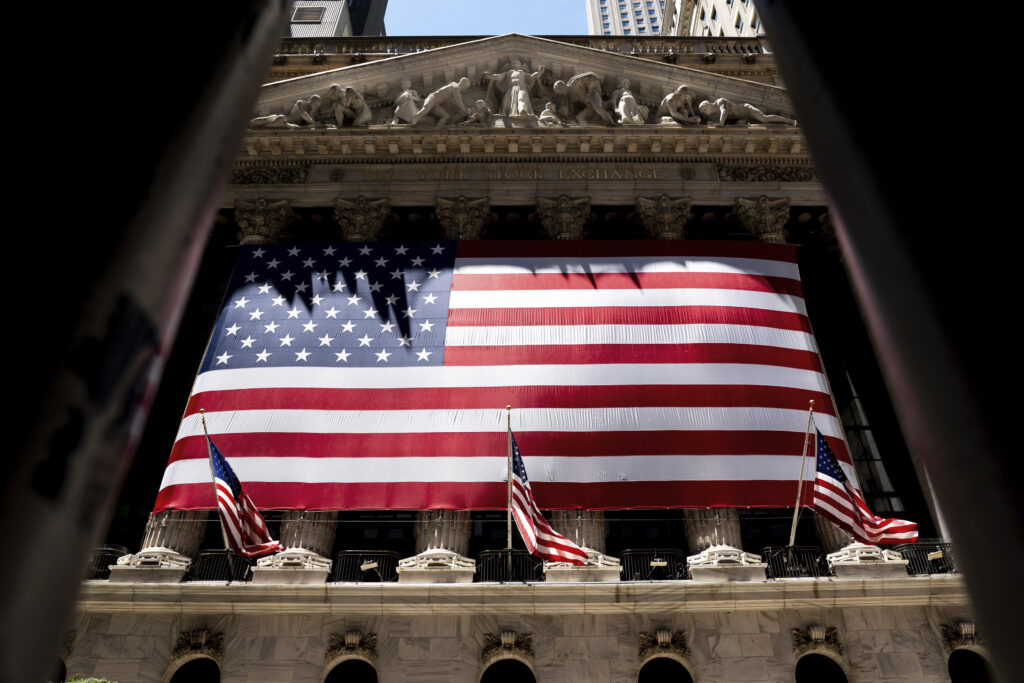
THIS IS A BREAKING NEWS STOCKS UPDATE. AP’s earlier story follows below.
NEW YORK (AP) — U.S. futures pointed lower Thursday ahead of new consumer spending data that could provide clues as to how Americans may be paring back spending in the face of stubbornly high inflation.
Futures for the Dow Jones industrials slipped 1.3% and futures for the benchmark S&P 500 index fell 1.6%.
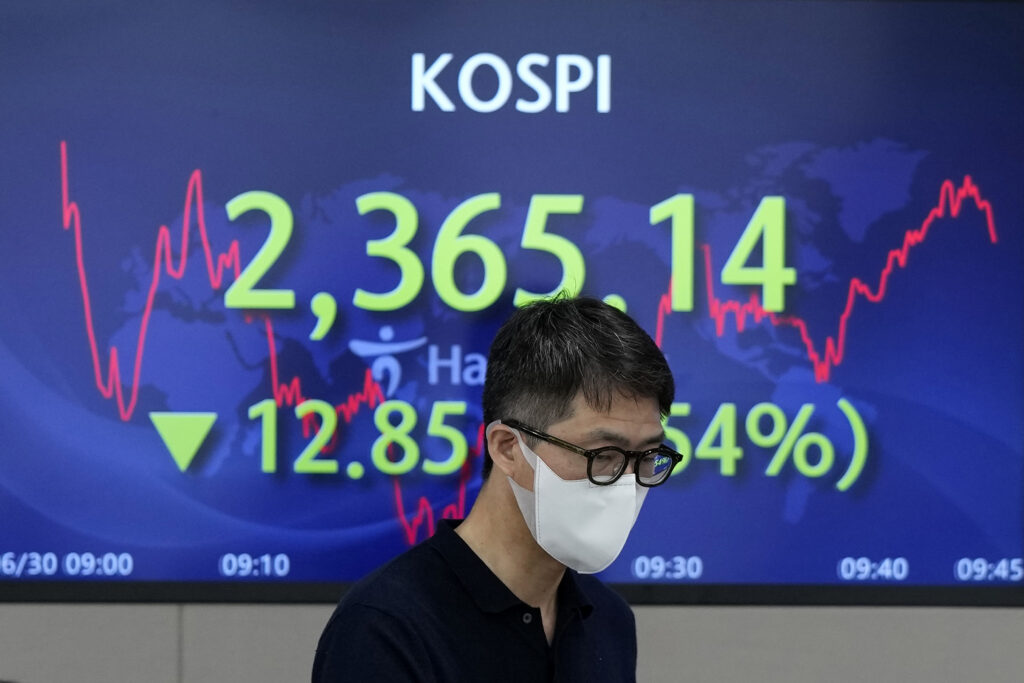
On Wednesday, the government confirmed that the U.S. economy shrank 1.6% in the first quarter in its third and final estimate of the country’s gross domestic product. However, a measure of consumer spending — which accounts for about two-thirds of economic output — was substantially weaker than previous calculations. Estimated growth in consumer spending was revised downward to 1.8% from the 3.1% calculated in May.
The Commerce Department issues its May stock report on consumer spending before markets open on Thursday, which will give investors more detail about Americans’ spending last month.
Investors are uneasy about signs the biggest global economy might be in a recession due to interest rate hikes imposed to cool surging inflation.
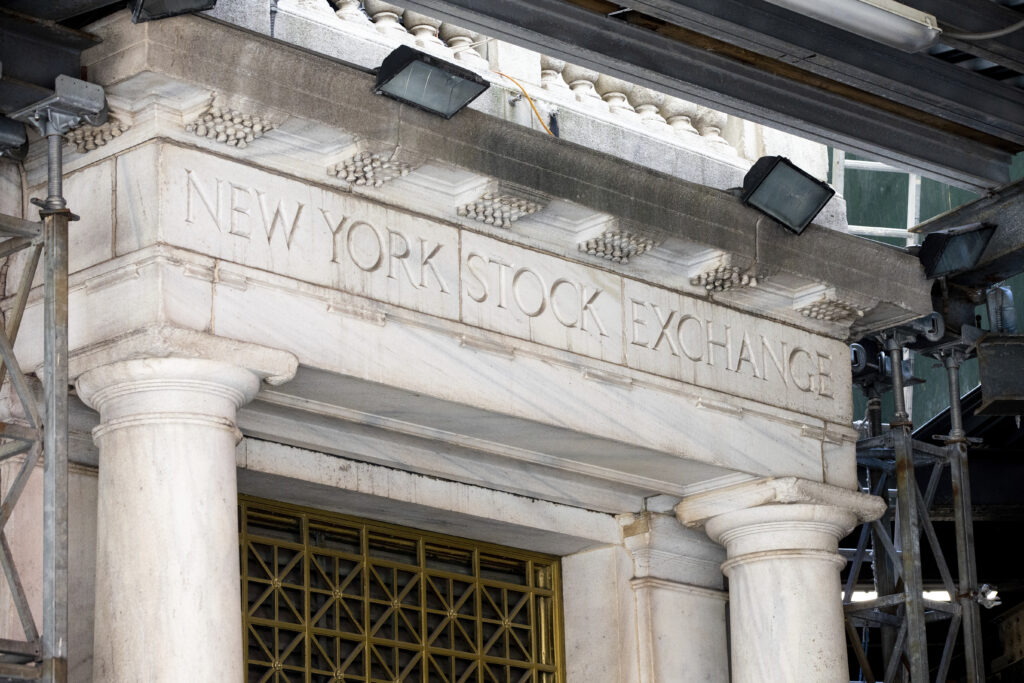
“Equities demand could remain muted for at least the next four to six months as interest rate hikes work through the U.S. economy,” Stephen Innes of SPI Asset Management said in a report.
In midday trading, the FTSE 100 in London fell 2%, and the DAX in Frankfurt and the CAC 40 in Paris each shed 2.9%.
In Asia, the Shanghai Composite Index rose 1.1% to 3,398.62 after an official monthly gauge of factory activity rose and new orders improved. The Hang Seng in Hong Kong lost 0.5% to 21,899.57 after spending much of the day in positive territory.
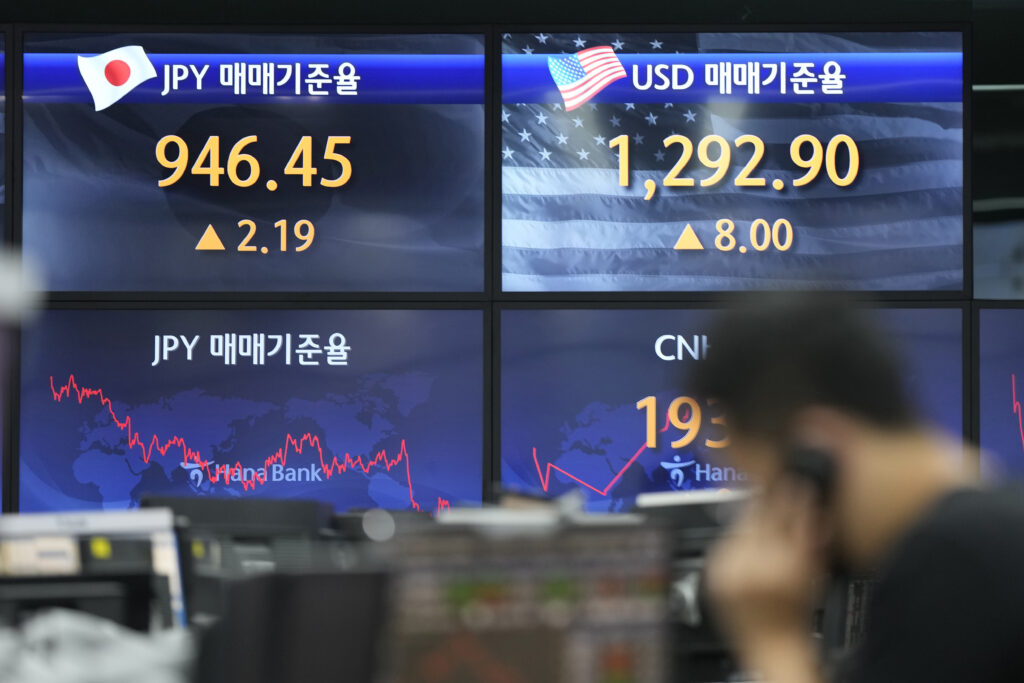
The Nikkei 225 in Tokyo fell 1.5% to 26,393.04 after May industrial production slumped 7.2% compared with the previous month. That was the sharpest decline since the start of the coronavirus pandemic in early 2020 and reflected disruptions in China due to the anti-virus controls.
The Kospi in Seoul shed 1.6% to 2,339.70 after official data showed industrial production rose 0.1% in May, possibly also depressed by disruption caused by anti-disease measures that temporarily shut down Shanghai and other Chinese industrial centers.
Sydney’s S&P-ASX 200 declined 2% to 6,568.10 while India’s Sensex gained 0.3% to 53,208.84. New Zealand, Singapore and Bangkok advanced while Jakarta declined.
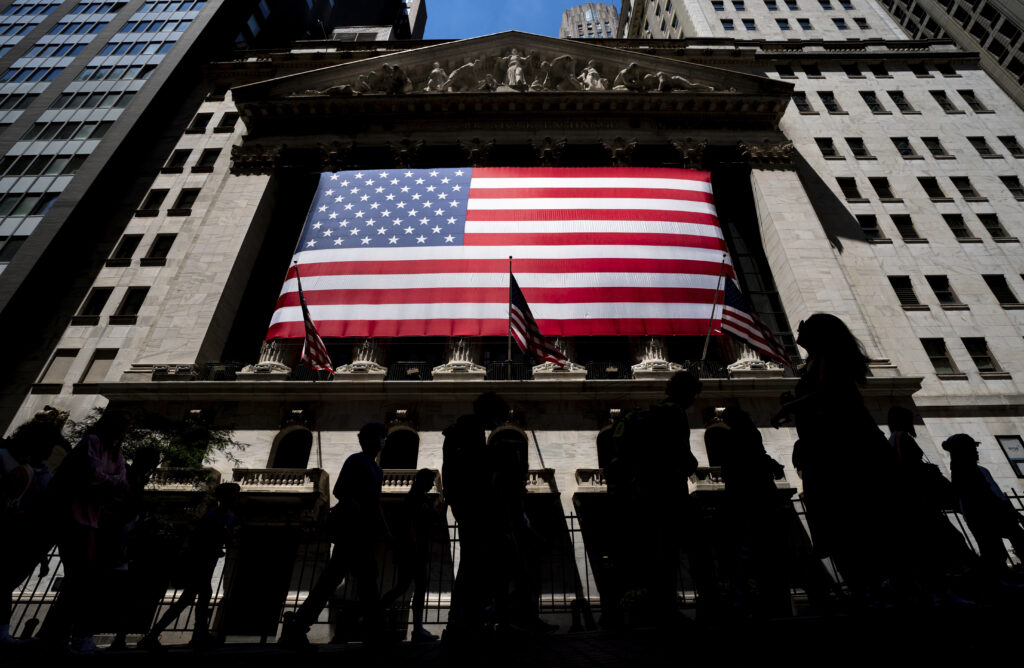
Federal Reserve Chair Jerome Powell, speaking at a European Central Bank meeting in Portugal, said Wednesday there is “no guarantee” inflation can be tamed without hurting the job market.
Investors are also awaiting weekly U.S. jobless benefit claims, which have been consistently low, although there have been more layoffs in industries that have cooled lately, such as real estate, technology, and cryptocurrency.
The global economy also has been roiled by Russia’s invasion of Ukraine, which pushed up prices of oil, wheat, and other commodities.
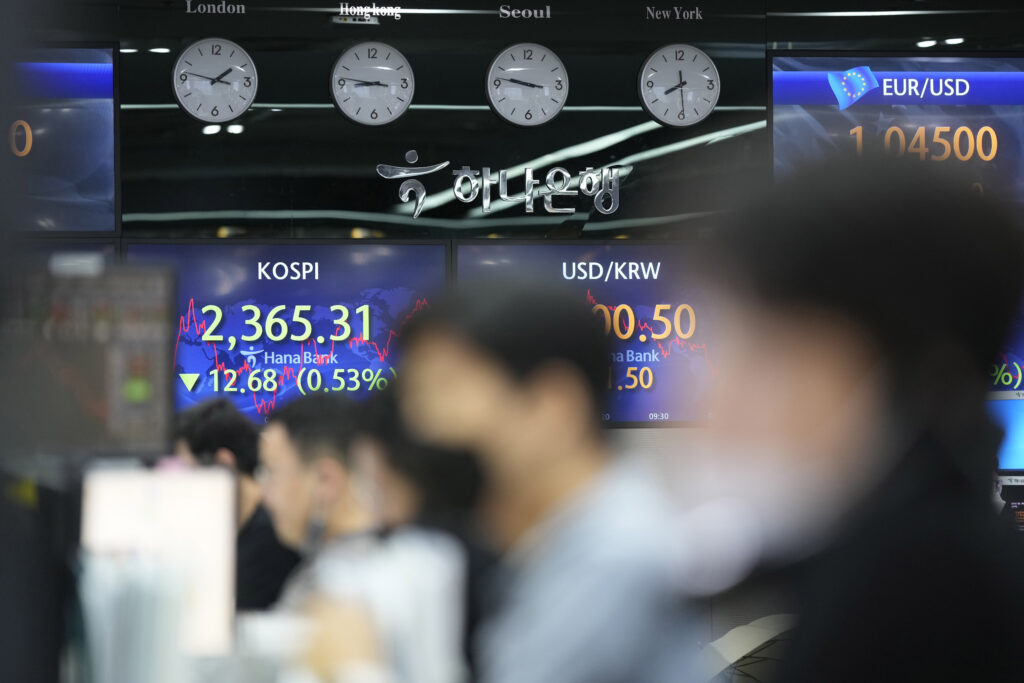
A monthly purchasing managers’ index released Thursday by the Chinese statistics agency and an industry group rose to 50.2 in June from 49.6 on a 100-point scale on which numbers above 50 indicate activity is increasing.
On Wednesday, the S&P 500 slipped 0.1%, sending the U.S. benchmark down 7.6% for the month and 20% from its Jan. 3 peak.
The Dow rose 0.3% while the Nasdaq composite slipped less than 0.1%.
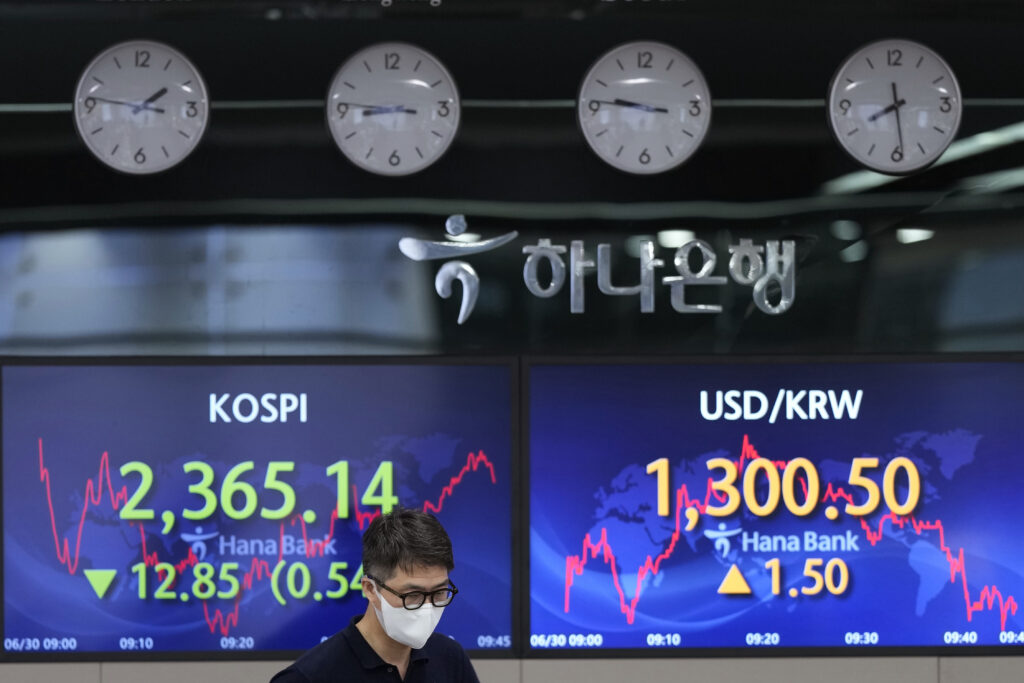
In energy markets Thursday, benchmark U.S. crude lost 96 cents to $108.82 per barrel in electronic trading on the New York Mercantile Exchange. The contract fell $1.98 on Wednesday to $109.78. Brent crude, the price basis for international oil trading, lost 71 cents to $111.74 per barrel in London. It shed $1.72 the previous session to $116.26. per barrel.
The dollar declined to 136.39 yen from Wednesday’s 136.54 yen. The euro fell to $1.0389 from $1.0523.
Source AP






